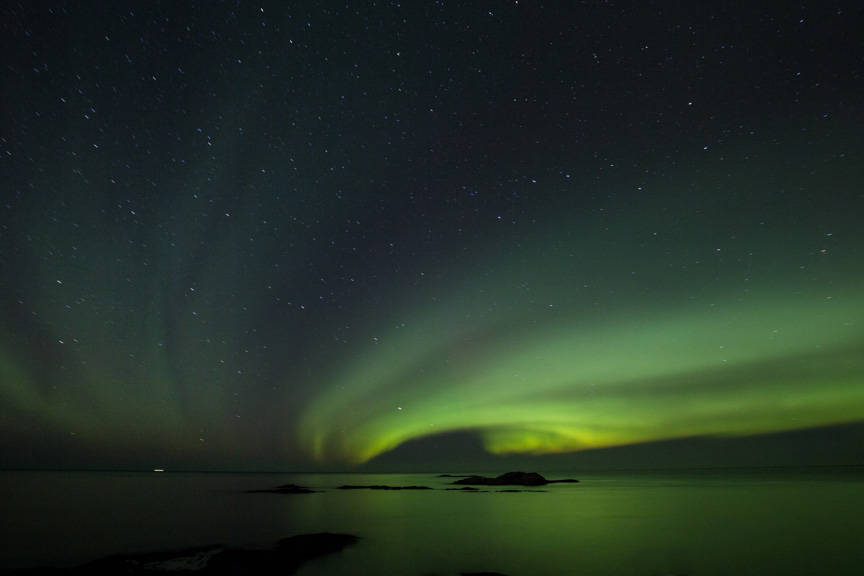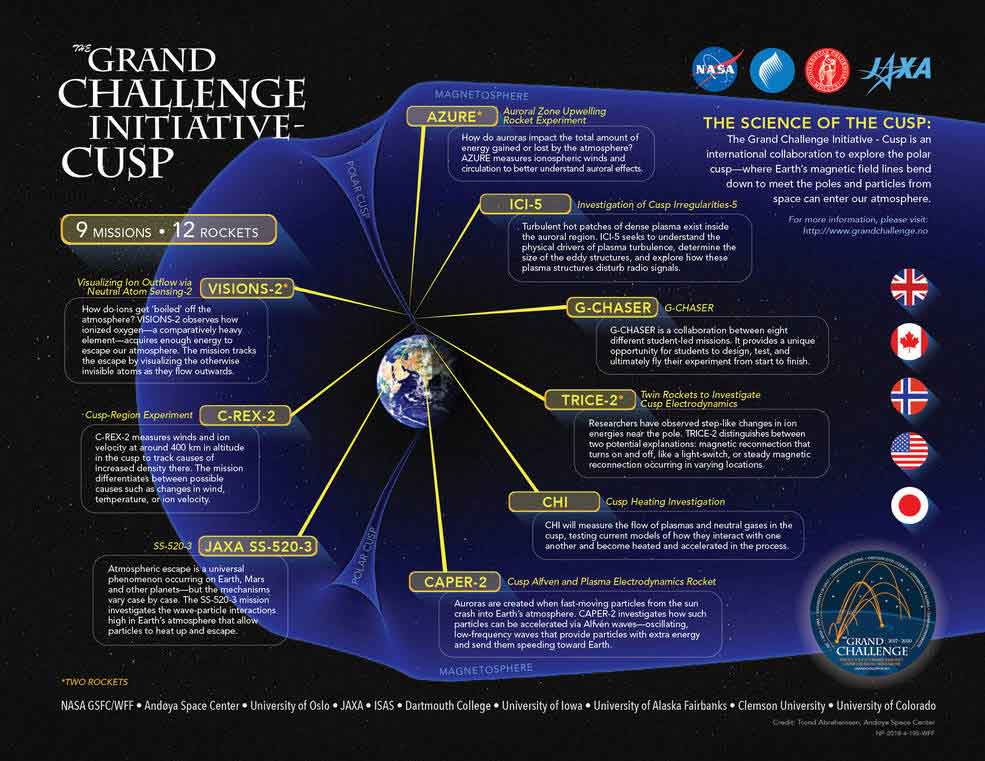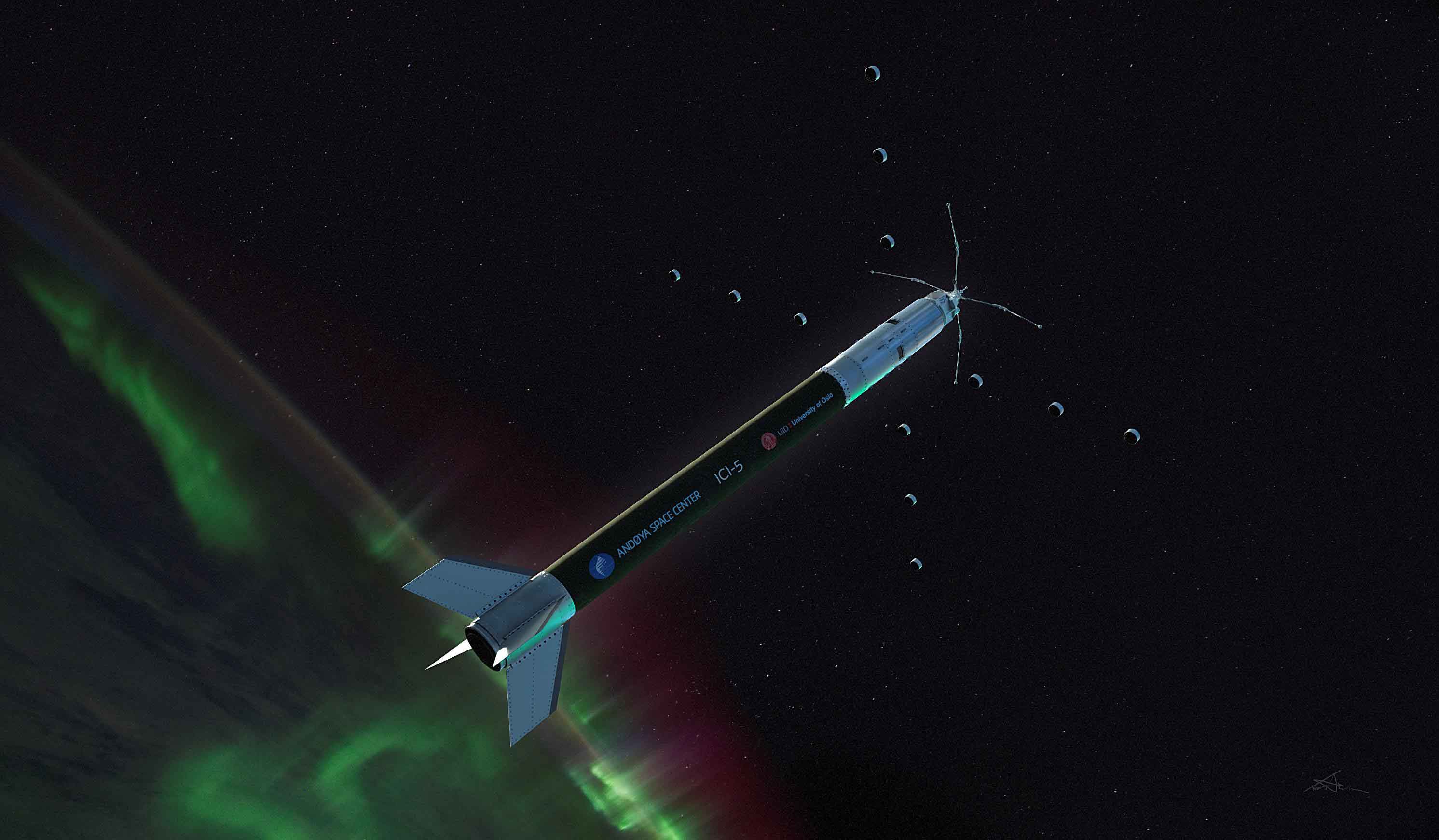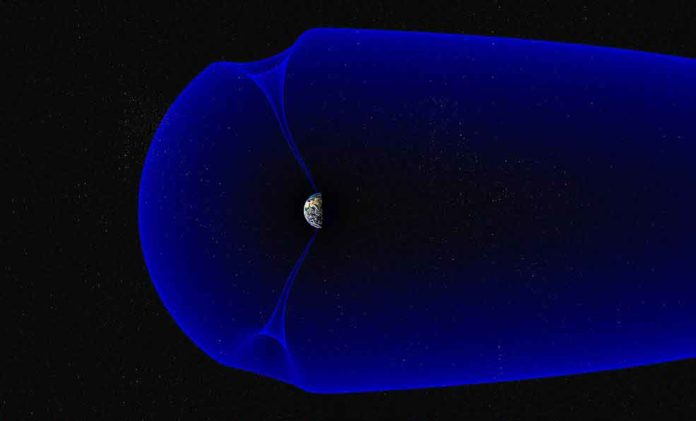Observing Night sky from the edge of the Norwegian ocean, you know you’re in an uncommon place. The freezing twists stream over an open sky, painted by the move of Aurora Borealis. Space nearly appears to be nearer here.
This special place is known as the northern polar cusp. It’s one of just two places on Earth where particles from the Sun have direct access to Earth’s atmosphere— and the natural laws of terrestrial physics can take an odd turn.
The cusp is our nearest entryway to near-Earth space, a district that is progressively part of the human domain, home not exclusively to space explorers yet in addition interchanges and GPS signals that can influence those of us on the ground regularly.
Throughout the following 14 months, NASA researchers will join a gathering of worldwide specialists to investigate the northern polar cusp. Besides the seals of their respective countries, these scientists will fly an assembled banner bearing the name of their undertaking: The Grand Challenge Initiative – Cusp, a worldwide coordinated effort to investigate the district where Earth meets space.

Credits: Violaene Kaeser
What is the polar cusp?
Earth is encompassed by a mammoth magnetic bubble known as a magnetosphere, made by the churning liquid iron in our planet’s external center. The magnetosphere shields us from a large number of the most hazardous inhabitants of the space condition, including the hot, electrically charged stream of particles known as the solar wind.
The cusp stays positioned at local noon — wherever the Sun is directly overhead. As Earth turns, particles are funneled into different regions of the atmosphere like a tube of icing squirted onto a rotating cake. Once a day, the cusp passes right above Andøya Space Center and Ny-Ålesund, Svalbard rocket ranges in Northern Norway — where the Grand Challenge participants begin their investigations.

Credits: NASA’s Goddard Space Flight Center/Mary Pat Hrybyk-Keith
The scientists of the Grand Challenge will fly sounding rockets — sub-orbital rockets that shoot up into space for a few minutes before falling back to Earth. Sounding rockets can access Earth’s atmosphere between 30 and 800 miles above the surface, the lower end of which is too high for scientific balloons and too low for satellites.
However, the cusp is the only place where the dayside auroras are found. The glimmer of the dayside aurora serves as a ghostly reminder that here, something unearthly is sneaking in.
The more we understand about the fundamental processes that drive near-Earth space — including those processes that disrupt our technology and endanger our astronauts.
Jim LaBelle, professor of physics and astronomy at Dartmouth College said, “Auroras are the product of a violent collision between speedy charged particles — mostly electrons, but occasionally protons — and atmospheric gases. The process begins with fast-moving electrons, which somehow become accelerated as they fly through the cusp down to Earth. There, they sometimes collide with gases in Earth’s atmosphere, imparting some of their energy and putting them in an excited state. Eventually, those gases relax back to a lower-energy state, releasing a photon in the process that we perceive as the glow of the aurora. The color depends on the type of gas: molecular oxygen producing green, atomic oxygen producing red, and molecular nitrogen blue.”
“But exactly how do those electrons get moving so fast in the first place?”
“CAPER-2 is all about observing how particles accelerate in space. The aurora presents us with a kind of local laboratory where we can observe these processes close at hand.”
LaBelle said, “The special thing about this rocket is we have a number of instruments that are tuned up to measure charged particles and electric fields together. CAPER-2 is set to launch in January 2019.”
At the point when the aurora sparkle, they don’t simply emanate light — they additionally discharge warm and active vitality into the air. A portion of this vitality escapes once again into space, yet some of it remains with us. Which way this parity tip depends, to a limited extent, on the breezes in the cusp. Understanding this parity of vitality is the focal point of the Auroral Zone Upwelling Rocket Experiment or AZURE mission, planned to be dispatched in April of 2019.
Miguel Larsen, a space physicist at Clemson University in Clemson, South Carolina and principal investigator for the mission, said, “The results will be key to a better understanding of how and where the auroral energy is deposited.”
For satellites that pass through the cusp, these density increases act like potholes, shaking up their orbits. Scientists don’t currently understand what causes these density increases, but they have some clues.
Ongoing examination has additionally found strange hot patches of fierce plasma inside the auroral area that rain enthusiastic particles towards Earth. Seeing how and why these hot patches frame isn’t simply essential science — it’s very down to earth.
Credits: NASA’s Goddard Space Flight Center/Joy Ng
Jøran Moen, professor of physics at the University of Oslo and principal investigator of the Norwegian Investigation of Cusp Irregularities-5 or ICI-5 mission, said, “Understanding and characterizing the turbulence and their drivers is crucial to forecast severe GPS signal disturbances. Those GPS signals become garbled as they pass through turbulent plasma, affecting so many of today’s technologies that depend on them.”

Credits: Andøya Space Center/Trond Abrahamsen
Sounding rockets programs are touted for their focus on training future scientists, and the Grand Challenge Initiative – Cusp is no exception. One mission, called G-CHASER, is made up entirely of student researchers, many of whom are flying their experiments for the first time.
The mission, led by Principal Investigator Chris Koehler, director of the Colorado Space Grant Consortium at the University of Colorado Boulder, is a collaboration between seven different student-led missions, providing a unique opportunity for students to design, test and ultimately fly their experiment from start to finish.
